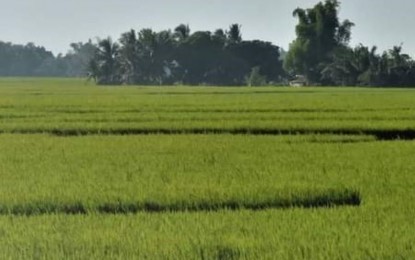
RICEFIELD. Some 12,000 hectares of rice lands in Negros Occidental, including this one located in Bago City, are irrigated. With assistance from the provincial government, farmers continue to brace for the effects of El Niño on rice crops in the coming months. (File photo courtesy of PIO Negros Occidental)
BACOLOD CITY – Negros Occidental Governor Eugenio Jose Lacson advised rice farmers to maximize the use of water sources as the province continues to brace for the effects of El Niño in the coming months.
The governor issued the reminder as the Philippine Atmospheric, Geophysical and Astronomical Services Administration (PAGASA) outlook for January as of Wednesday showed below-normal rainfall conditions over most parts of Negros Occidental and a dry spell by the end of the month.
“We have at least 12,000 hectares of irrigated lands. What is important is we can maximize our sources of water. Before, we were relaxed because it had been raining, and sometimes there was wastage. But now, we should not waste water at all,” he said in an interview.
Lacson said the province would use water pumps to bring out water from areas where water could be gathered or impounded.
“Irrigated areas will continue to be irrigated. About 60 percent of our rice lands are irrigated. We are 84 percent rice sufficient. We would like to, at least, maintain that, but I’m also encouraging the farmers to increase their production,” he added.
Earlier, Provincial Administrator Rayfrando Diaz II said the provincial government procured 30 sets of water pumps with pipes to distribute water supply to the irrigation system from impounding sites.
These will mainly benefit rice farmers under the Federation of Irrigators’ Association of Central Negros-Bago River Irrigation System, mainly from Bago City, La Carlota City, Valladolid, Pulupandan, and San Enrique.
Located just south of this city, Bago City alone yields more than 30 percent of the rice production in the province.
In its El Niño alert, the PAGASA weather bureau noted an expected increase in the likelihood of below-normal rainfall conditions in particular areas of the country, which could have negative impacts, such as dry spells and droughts. (PNA)
